China is an ancient civilization with a history of more than 5,000 years. There are many kinds of handicrafts, and they are all dazzling. Chinese traditional handicraft, each of them is a treasure of Chinese culture, and these handicrafts are worth inheriting and protecting.
1 Tuanshan
Tuanshan (团扇), also known as Gongshan (宫扇) and Wanshan (纨扇), is traditional handwork and art of the Han nationality in China. It is a round fan with a handle, which represents a friendly and auspicious reunion. Fans have long circles, plum blossoms, hexagonal and other shapes; and making with silk, thin silk and so on; the craftsmanship includes Suzhou embroidery, Kesi, gold and silver inlays, and so on; the fan handle has wood, bamboo, bones, and so on. A Tuanshan contains too much learning.
2 Cheongsam
The cheongsam (旗袍) is one of the traditional women's clothing that can represent Chinese characteristics. The cheongsam was formed in the 1920s, and some scholars believe that its origin can be traced back to the Shenyi of the pre-Qin and Han dynasties. Although its definition and timing are still controversial, it is still one of the most gorgeous phenomena and forms in China's long-standing clothing culture.
Making a cheongsam requires measuring 36 body data, various traditional embroidery skills are need, such as embroidery gold, silver, and rolling edges. A process is common for a day or two, it will take a week to just sew an ordinary cheongsam. A few high-end hand-made cheongsams can also put embroidery on the collar, the design is unique, and its skills can also be called ingenious, which is amazing. Therefore, handmade production is particularly precious in the production of cheongsam.
3 Hangzhou Embroidery
Hangzhou embroidery (杭绣), one of China’s excellent national traditional crafts, was in its heyday in the Southern Song Dynasty. Traditional Hangzhou embroidery not only provides embroidery for various royal clothing but also can decorate official clothing, quilts, screens, wall hangings, and so on. At its peak, there were only 300 people who mastered this skill. There is a rule in the craftsmanship of Hangzhou embroidery that it is passed on to men but not women and those who are engaged in this craft are men, so it is also called "male work embroidery".
The Hangzhou embroidery process is very cumbersome. A work has to go through several processes such as drawing a draft, wiring, sketching a draft, and processing the embroidery pattern with gold and silver thread. The workmanship is exquisite and cumbersome, and the technique is time-consuming and labor-consuming. Therefore, few people are willing to devote themselves to learning this craft.
4 Kesi
Kesi (缂丝) is the essence of traditional Chinese silk art. It is one of the most traditional types of Chinese silk weaving, using the technique of picking the warp and showing the weft, and is a highly appreciated decorative silk fabric.
The earliest Kesi silk objects can be traced back to the Han and Wei Dynasties, because of the complicated craftsmanship, they are mainly used for decorations. Since the Song and Yuan Dynasties, Kesi has been one of the royal fabrics, which is often used to weave empress costumes, royal portraits, and copy celebrity calligraphy and paintings.
5 Filigree Inlay Art
Filigree inlay art (花丝镶嵌), also known as fine gold craftsmanship, is a Chinese traditional handicraft that has been passed down from a long time, mainly used in the production of royal jewelry. It’s a combination of two production techniques, filigree and inlay.
This craft is known as one of the "Eight Unique of Yanjing", a court art. The materials used are all precious metals such as gold, silver and jewelry, and the craftsmanship is extremely complicated.
From design to material preparation (hand wire drawing), rubbing, weaving, pinching, burning, filling, and inlaiding gemstones often take several years.
The Golden Silk Crown of Emperor Zhu Yijun of the Ming Dynasty, is all made of gold wire, and the most incredible thing is that no joint was found in the whole crown, and its exquisite workmanship was amazing, which is known as the peak of filigree inlay art.
6 Tian-tsui
Tian-tsui (点翠) craft is a traditional Chinese gold and silver jewelry production process. It is an auxiliary work in jewelry production, which plays the role of embellishing gold and silver jewelry. The jewelry made with Tian-tsui craft has a good gloss and bright color. As long as pay attention to protection during use, the luster and color can be preserved for a long time.
Tian-tsui was first seen in the Han and Wei Dynasties. It was widely popular in the Ming and Qing Dynasties. During the Qianlong period, the craftsmanship reached its peak, and it was more common in the palace and the noble families. By the end of the Qing Dynasty, many rich families will prepare a set of Tian-tsui jewelry as dowry when their daughters get married to add dignity. Therefore, Tian-tsui jewelry is also frequently seen in private collections.
The visible Tian-tsui jewelry is basically old objects, most of them are used in Dan role's headwear in Peking Opera, and it is also the standard configuration of the heroine in Peking Opera.
In the old days, the material of the Tian-tsui was taken from the feathers of the kingfisher, but nowadays, various materials such as goose feathers and ribbons can be used instead of the feathers of the kingfisher to make the kingfisher jewelry, and thus the craft has been inherited.
7 Citai Zhubian
Zhubian is one of the oldest traditional Chinese craftsmanship. While Citai Zhubian (瓷胎竹编) is a unique Chinese traditional handicraft in Chengdu, Sichuan. It originated in the middle of the Qing Dynasty and was mainly used as a tribute at that time. Then the skills have been passed down several times, and production was rediscovered and resumed in the 1950s.
Citai Zhubian products have unique skills, which are good at fineness, and have the technical characteristics of "selected materials, extra-fine, close to the tire, hidden head, colorful pictures".
8 Fruit Pit Carving
Folk mostly carved with peach pit, perforated and hung on the body as a "ward off evil" use. Some of them are made into pendants, fan pendants, and beads for the literati to play with. The art is characterized by the expression of complex themes on small kernels and the engraving technique is also meticulous.
Fruit pit carving in Zhoushan, Zhejiang province is one of the miniature carving processes of the Han nationality. Carve on a peach pit, apricot pit, olive nucleus and other pits. When carving walnuts, the kernel needs to be operated on a wooden board. The thinnest knife is less than 1 mm in diameter. A finished micro-carving needs to be carved with tens of thousands of cuts.
9 Wu Tong Zou Yin
Wu Tong Zou Yin (silver walks on black copper) is a traditional Chinese copper handicraft unique to Yunnan, founded in Shiping, Yunnan. It takes copper as the fetus, carves various patterns on the tire, and then fills molten silver (or gold) water into the pattern. After cooling, polish it smoothly. Over time, the bottom copper naturally turns black, showing a silver (or gold) pattern, showing a clear black-and-white (or black and yellow) decorative effect, antique, elegant, and chic.
The process of Wu Tong Zou Yin is much more complicated than that of ordinary copper and silver. Craftsmen must master alloy smelting, carving modeling, calligraphy and painting, micro-carving, and other skills. Wu Tong Zou Yin handicrafts generally include the Four Treasures of the Study, wineware, fragrance sets, cigarette sets, tea sets, and so on.
10 Jianshui Pottery
Jianshui pottery (建水陶), Yixing pottery (宜兴陶), Qinzhou pottery (钦州陶), and Rongchang pottery (荣昌陶), are also known as the "Four Famous Pottery in China". Jianshui is located in the middle of Honghe Hani and Yi Autonomous Prefecture, Yunnan Province, one of the famous pottery-producing areas in China.
The history of Jianshui pottery can be extended to before the Song Dynasty. It is made of red, yellow, blue, purple, and white clay as raw materials. After the billet is formed, calligraphy and painting are carved and inlaid with white mud or other color mud. After roasting, need polished many times. And the decorate of Jianshui pottery often with carving and filling methods to produce the residual post, simple and elegant, with a unique artistic style.
11 Taohuawu New Year Picture
Taohuawu picture is a folk woodblock new year picture (年画) in the south of the Yangtze River in China. It is named after the production area around Taohuawu in Suzhou. Together with the woodblock new year picture of Zhuxian Town (朱仙镇), Henan Province, Yangliuqing (杨柳青) in Tianjin, Yangjiabu (杨家埠), Weifang, Shandong Province, and Mianzhu (绵竹), Sichuan, they were known as the top five folk woodblock new year picture in China.
Taohuawu new year picture originated from the engraving printing process of the Song Dynasty, evolved from embroidery pictures, and developed into a folk art genre in the Ming Dynasty. The Yongzheng and Qianlong years of the Qing Dynasty were the heyday.
More than one million Taohuawu woodblock new year picture are produced every year. The printing combines coloring and color set, the composition is symmetrical, plump, and gorgeous in color. It often uses fuchsia as the main tone to express a happy atmosphere.
The engraving, color, and shape have a fine and elegant folk art style in the south of the Yangtze River, which mainly shows traditional Chinese folk aesthetic content such as auspicious festivity, folk life, opera stories, and so on. On May 20, 2006, Taohuawu New Year Paintings were approved by the State Council to be included in the first batch of China intangible cultural heritage lists.
12 Glassware
Glassware, refers to utensils or handicrafts made of pigmented glass raw materials. China's production of glassware began around the end of the Yuan Dynasty and the beginning of the Ming Dynasty (mid-14th century). At that time, it was glazed utensils specially used for the palace. It was not until the period of the Republic of China that this group of craftsmen was exiled among the people, and ordinary people did not have access to the glassware.
Glassware is also known as "sculpture in the fire". The shaping of the whole work is completed at a high temperature, which greatly tests the craftsman's manipulation and proficiency. Coloring depends on the integration of materials of various colors, especially halo, color transition, and other processes all depends on the craftsman's exquisite skills.
13 Mortise and Tenon
Sun Mao (mortise and tenon, 榫卯), is the main structural mode of traditional Chinese architecture, furniture, and other instruments. It is a connection method that combines concave and convex parts on two components. The protruding part is called Sun; the concave part is called a Mao. Adhesive and nails are rarely used in traditional Chinese architecture, and most of the parts are fitted with mortise and tenon structures. This traditional carpenter's craftsmanship, which is used in the construction of houses, is not only extremely strong, environmentally friendly, and natural, but also very beautiful.
In traditional Chinese culture, the tenon is Yang and mortice is Yin, The combination of the two pays attention to the balance between yin and yang, which is introverted and mediocre.
14 Burr Puzzle
Burr puzzle (鲁班锁), also known as Kongming lock and gossip lock. Legend has it that Lu Ban, a craftsman of Lu in the Spring and Autumn Period, used six wooden strips to make a toy that could be put together and disassembled, in order to test whether his son was smart.
A tightly sewn cross cube can only be dismantled one by one if the core piece of wood is found. This requires the concave and convex bite of the mortise and tenon structure inside the wood block, which is accurate and ingenious.
15 Burr Pillow
Burr pillow is said to have been invented by Luban 2,600 years ago. It is a complex and foldable wooden daily necessity made of a wooden board. It is carved with various patterns and text for appreciation. Burr pillow can also be opened as a small bench, when sleeping, it can be used as a pillow, which is easy to carry with high versatile and practical.
16 Huishan Clay Figurine
Huishan clay figurine, from Huishan ancient town, Wuxi, Jiangsu province. Before the middle of the Qing Dynasty, Huishan clay figurines had a high level of skills and were famous for a while, more than 40 large and small workshops and 30 famous artists. After autumn every year, about six or seven hundred cargo ships and thousands of people come to Huishan to buy clay figurines, and some high-end clay figurines are transported away as gifts with merchants.
There are two varieties of Huishan clay figurines. For one type, simple in shape, usually printed with molds and painted by hand, and usually in festive and auspicious themes, which are mainly aimed at ordinary people. The other type is scenes mostly based on Peking Opera and Kun Opera. They are handicrafts carefully pinched and painted by pure hand. They are deeply loved by literati and opera lovers because of their vivid characters and exquisite shapes.
17 Porcelain Restoration
"Porcelain Restoration (锔瓷)" is the technology of repairing broken porcelain with metal "Ju Zi (锔子)" like staples.
- The first step in porcelain restoration is to determine the location of the need to repair.
- The second step is to determine the number and location of Ju Zi according to the structure of the porcelain decoration.
- The third step is to punch a hole with a Jin Gang Zuan (金刚钻, diamond drill). This step is a big test for the porcelain restoration craftsman. First, the hand should be held steady to the right, it is better not to hit through. The second is that the hole should be symmetrical, there can not be a little deviation.
- The fourth step to fix the Ju Zi, this step reflects the level of the craftsman, but also determine the service life of the repaired porcelain. Ju Zi are available in gold, copper and other materials, and the size is calculated according to the condition of the object. In this way, the porcelain is not only repaired to hold water is not easy to leak, but also the vessel itself adds a bit of flavor.
- The final step is to use egg white and porcelain powder to mix and mend the leak to prevent the porcelain leakage.
18 Tinware
tinware making is an kind of ancient Chinese traditional handicraft dating back to 2700 BC at the earliest. The texture of tin is relatively soft, so it must be alloyed with other metal elements before it can be used to make tinware. Traditional tinware is handmade, but with the advent of the industrial age and the rise of aluminum and stainless steel products, traditional tinware production has become more and more marginalized, and now it has gradually becoming lost.
Only some of the Chinese traditional handicraft are mentioned above, I will continue to update this article in the future to introduce more traditional Chinese culture to you.
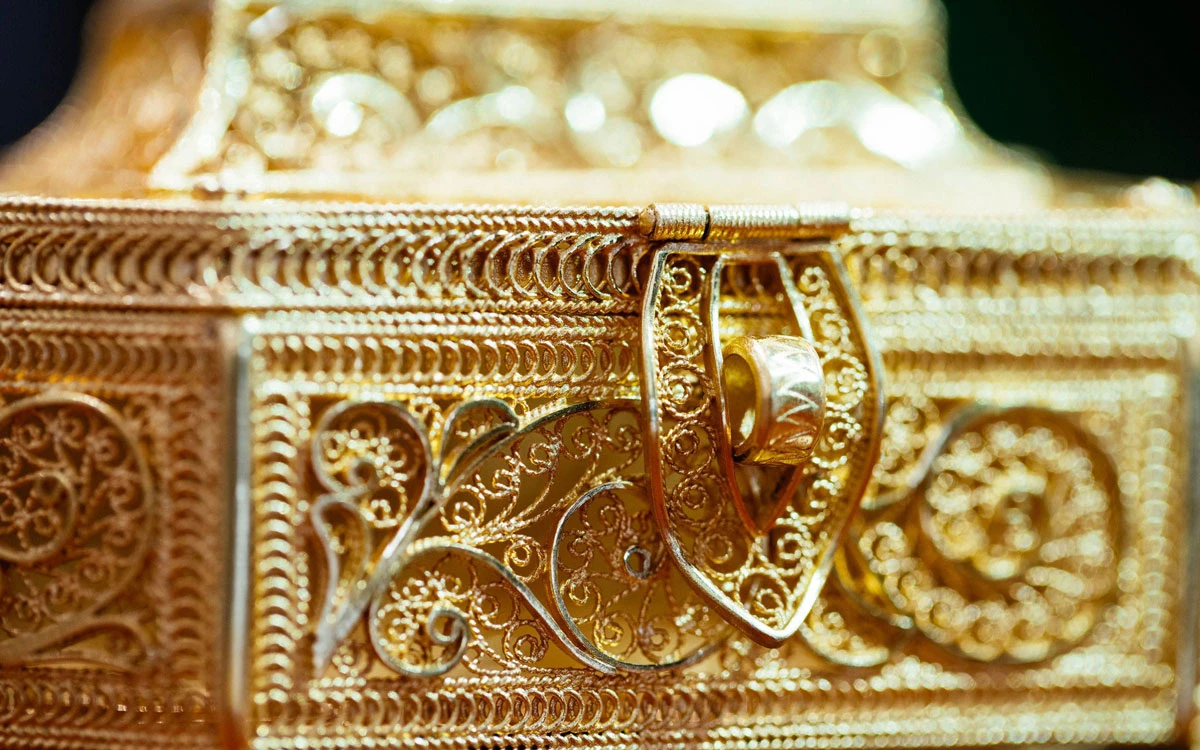
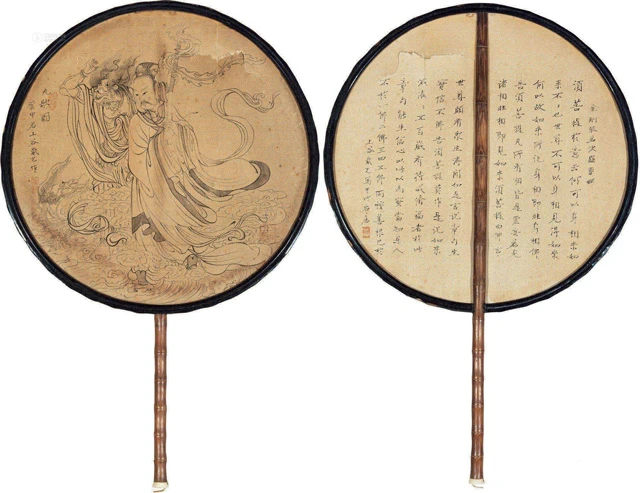
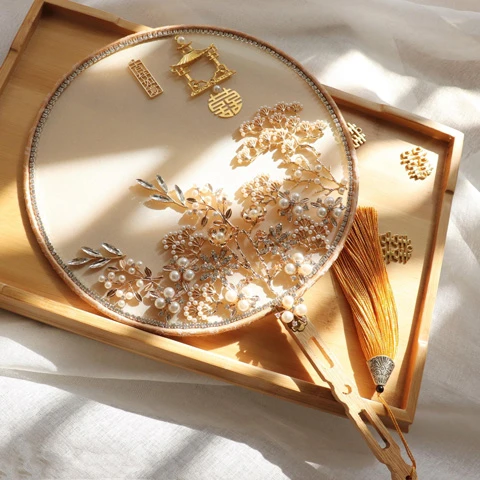
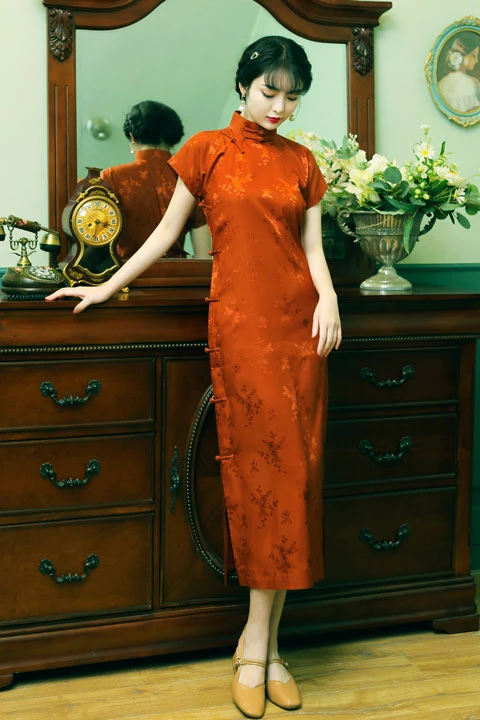
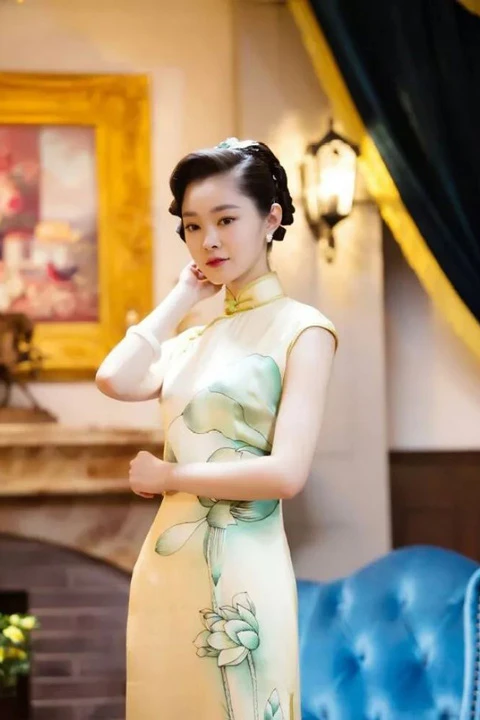
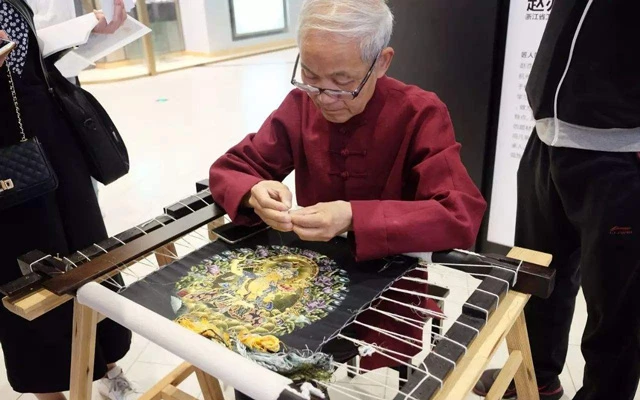
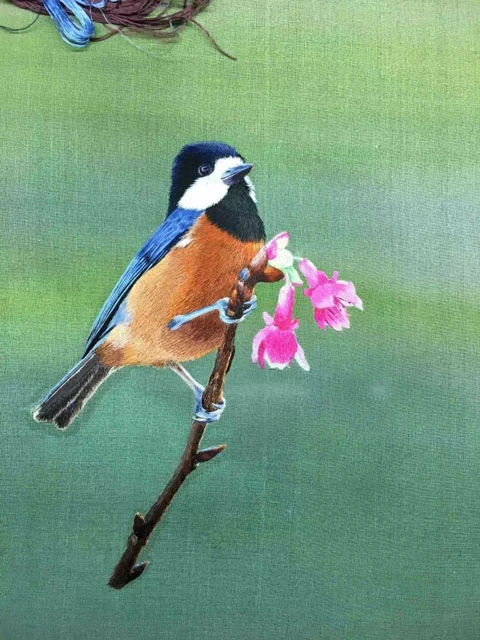
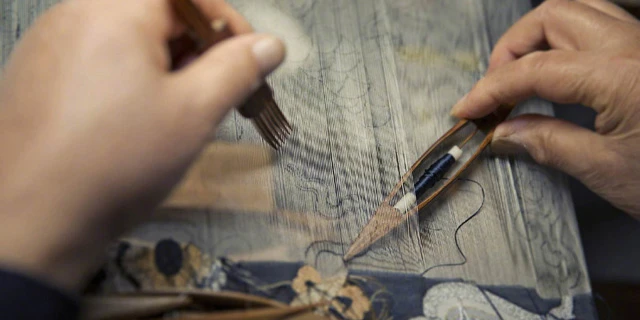
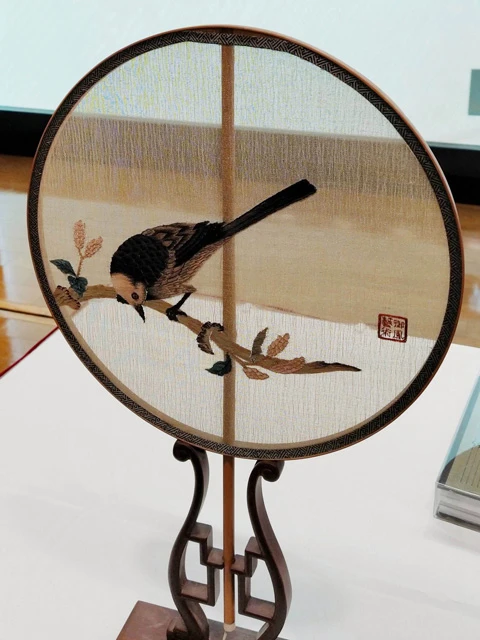
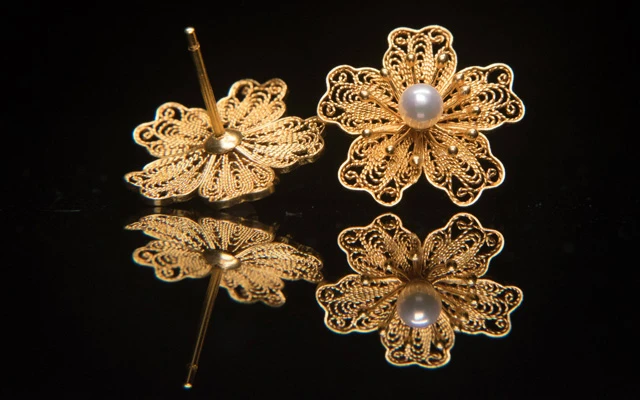

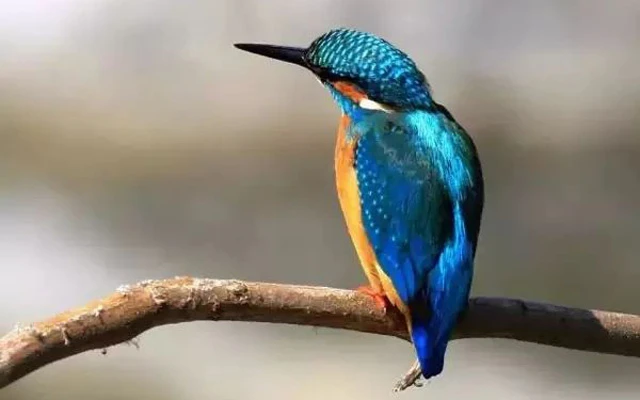
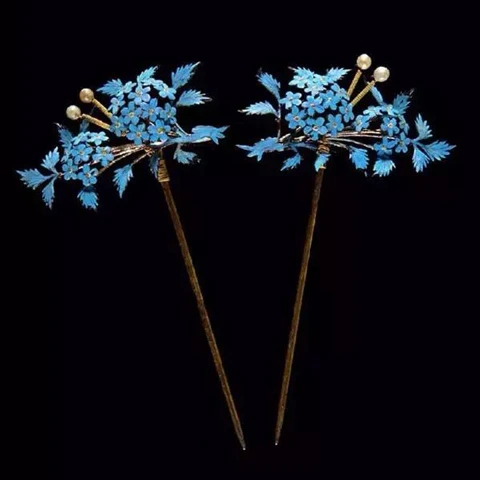
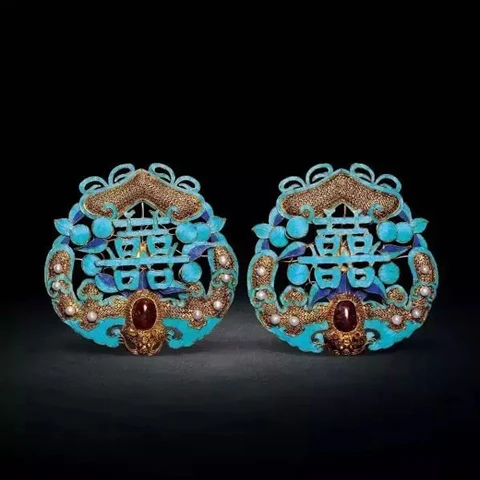
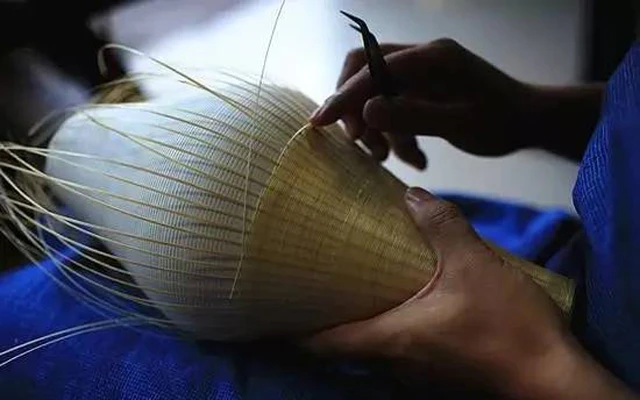
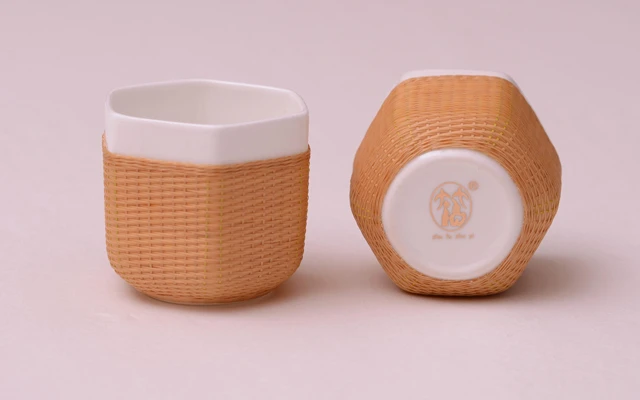
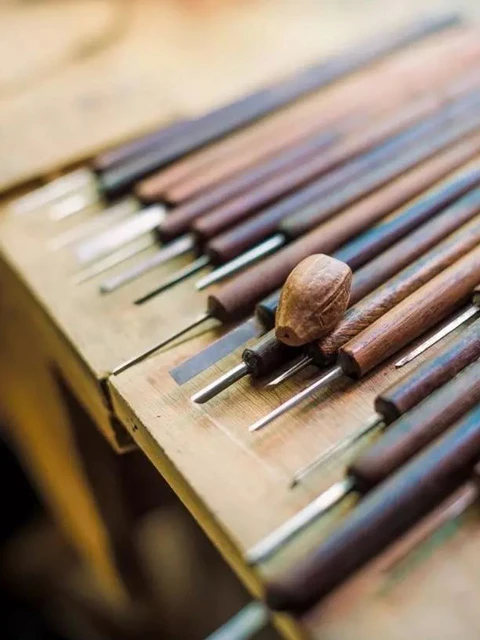
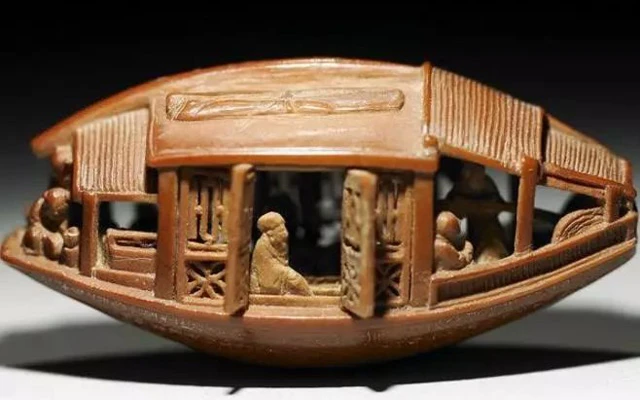
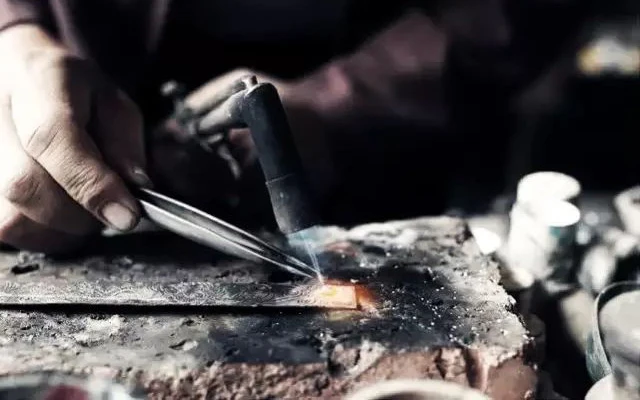
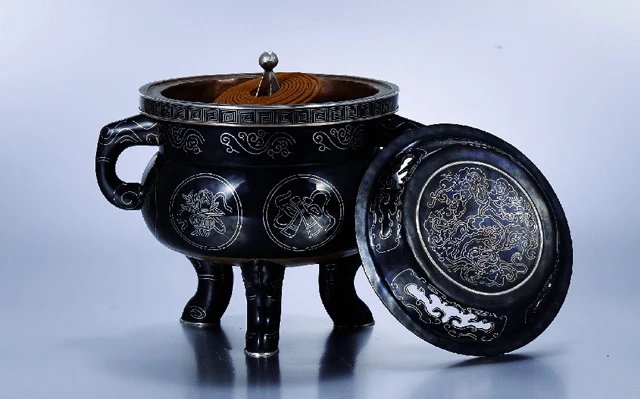
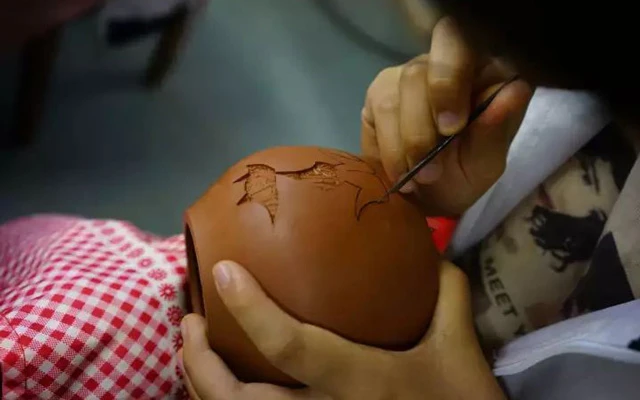
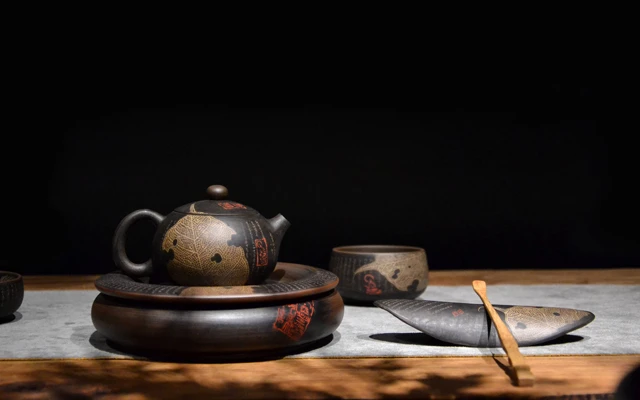
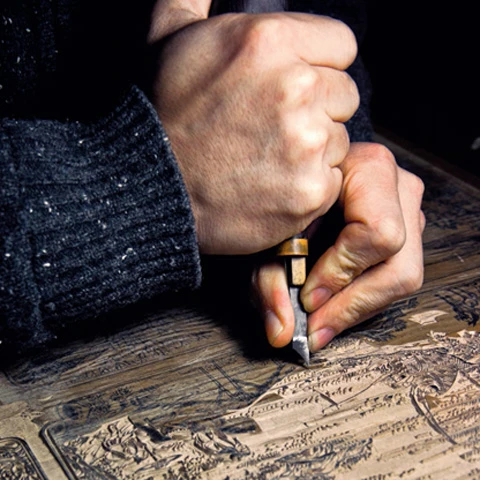
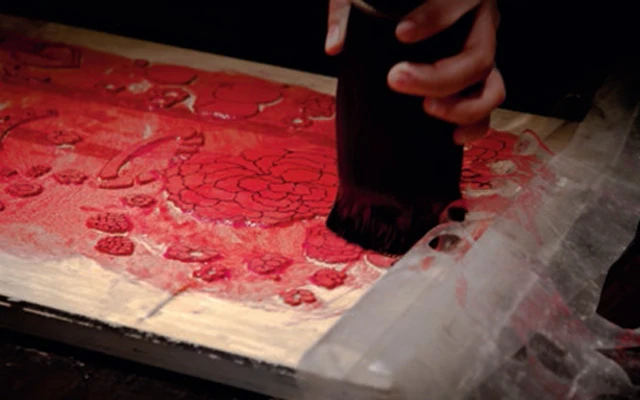
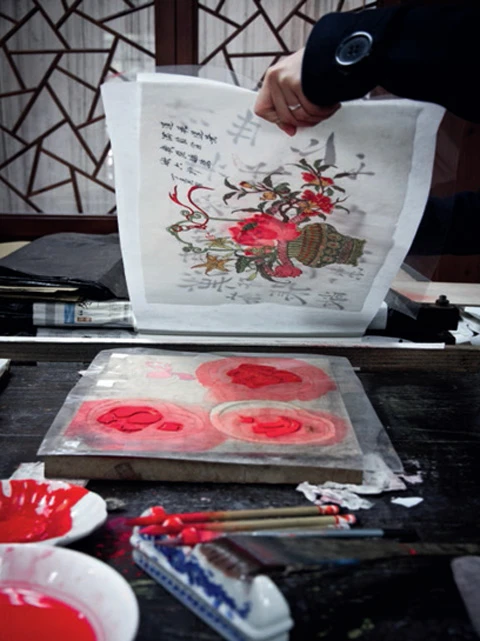
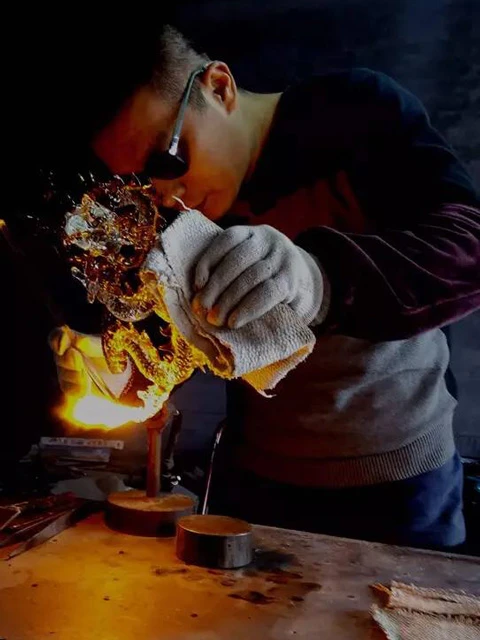

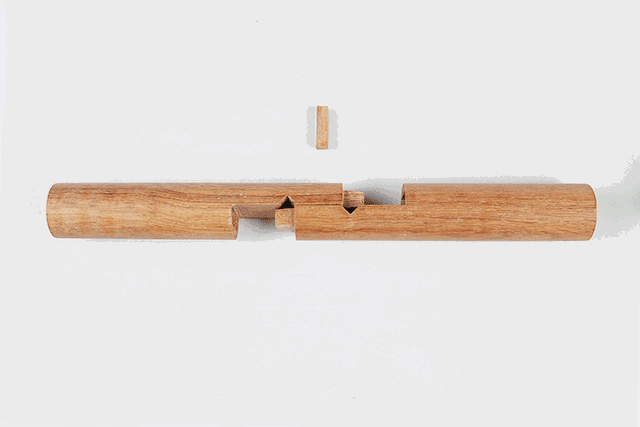
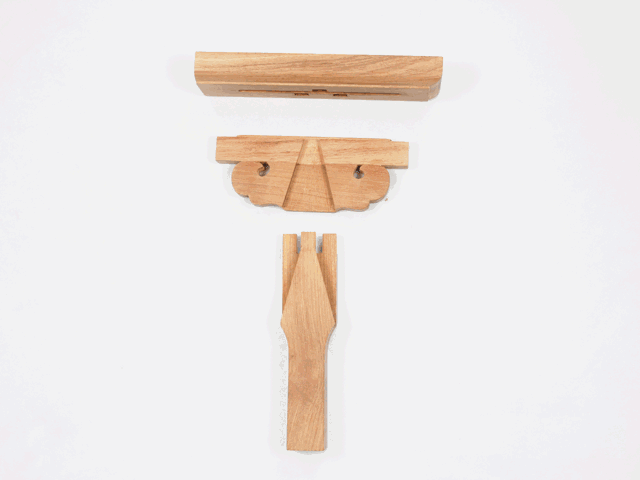
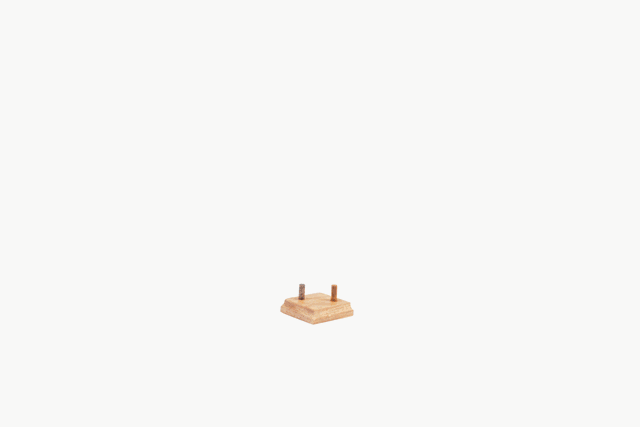
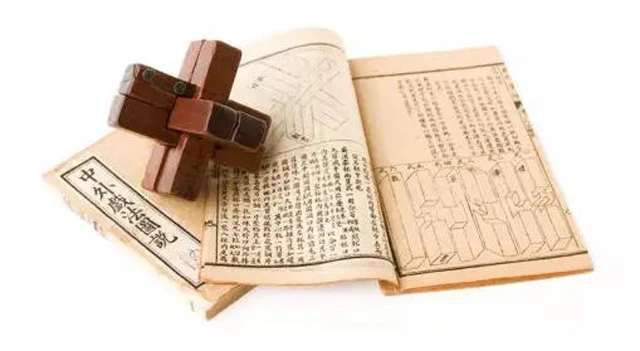
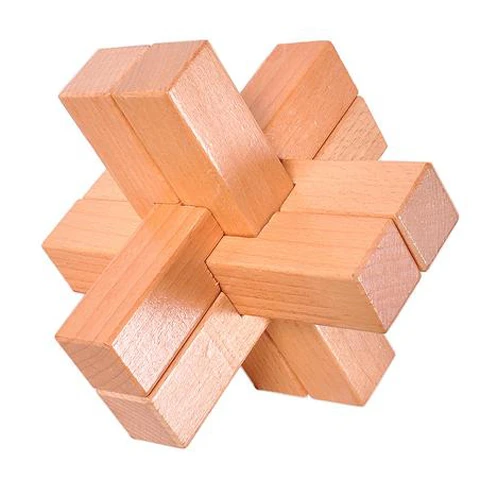
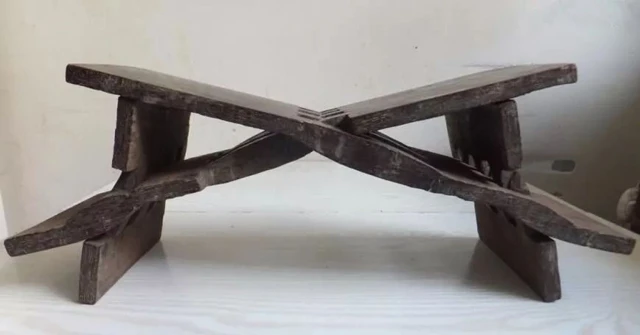
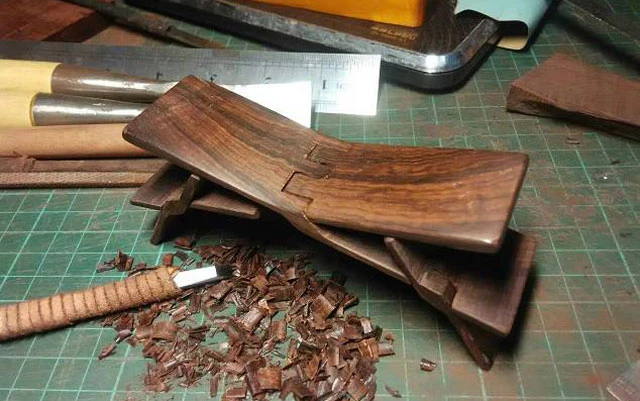
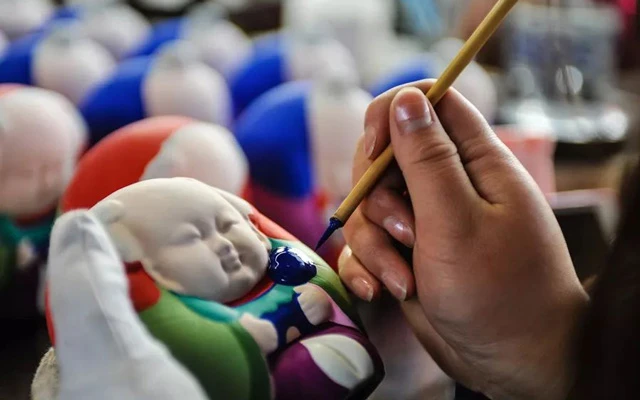
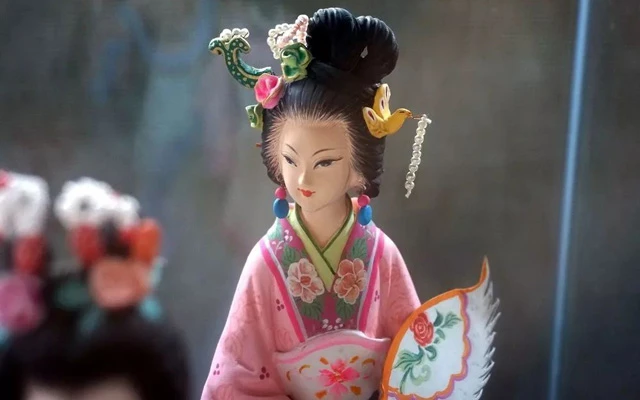
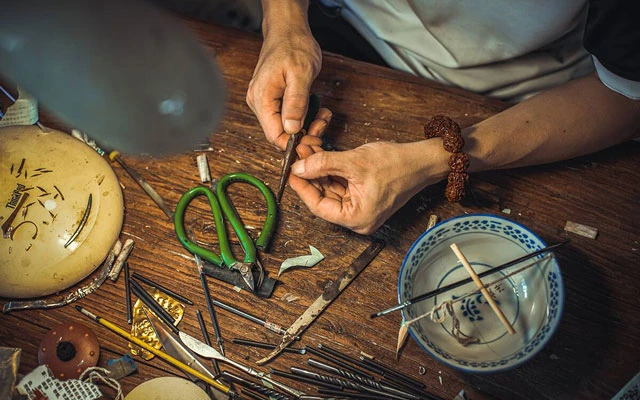
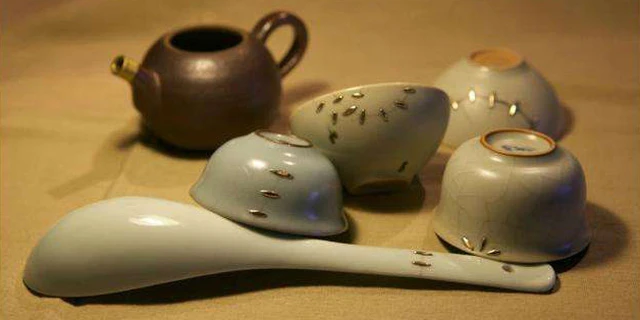

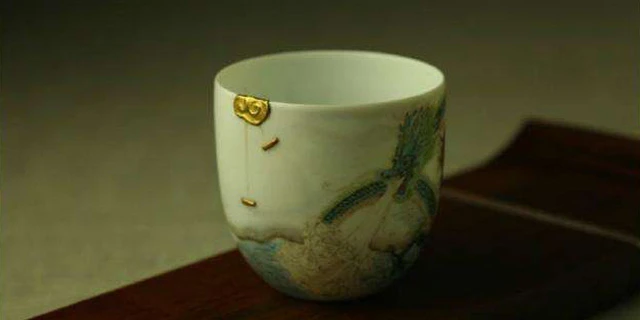
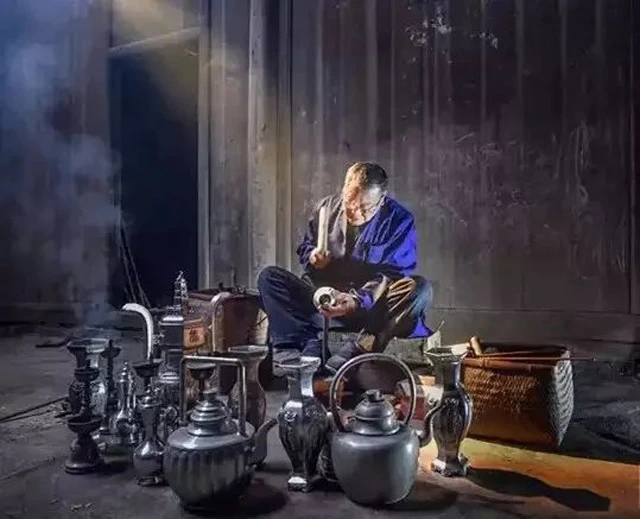
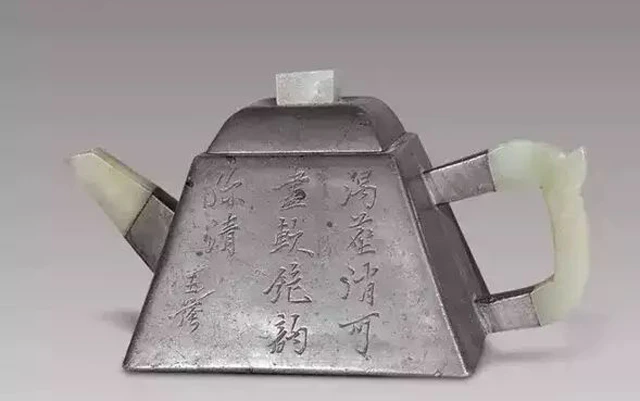


Sudah kreatif sejak zaman dulu, sampai sekarang berinovatif
Kerajinan yang keren
wow!! I love that you had pictures from both modern and older examples
Can't wait to see what the burr puzzle looks like